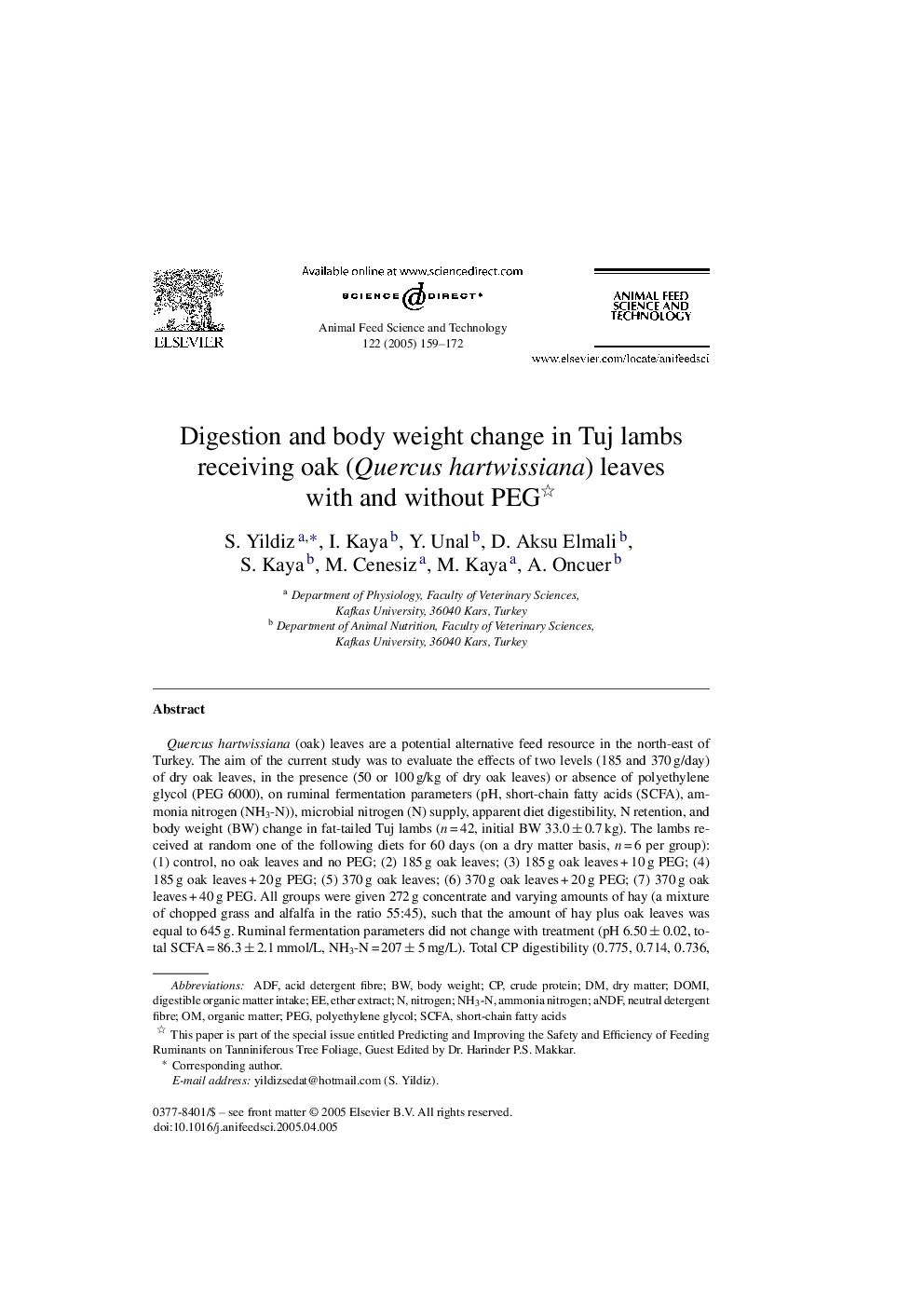| Article ID | Journal | Published Year | Pages | File Type |
|---|---|---|---|---|
| 8973688 | Animal Feed Science and Technology | 2005 | 14 Pages |
Abstract
Quercus hartwissiana (oak) leaves are a potential alternative feed resource in the north-east of Turkey. The aim of the current study was to evaluate the effects of two levels (185 and 370 g/day) of dry oak leaves, in the presence (50 or 100 g/kg of dry oak leaves) or absence of polyethylene glycol (PEG 6000), on ruminal fermentation parameters (pH, short-chain fatty acids (SCFA), ammonia nitrogen (NH3-N)), microbial nitrogen (N) supply, apparent diet digestibility, N retention, and body weight (BW) change in fat-tailed Tuj lambs (n = 42, initial BW 33.0 ± 0.7 kg). The lambs received at random one of the following diets for 60 days (on a dry matter basis, n = 6 per group): (1) control, no oak leaves and no PEG; (2) 185 g oak leaves; (3) 185 g oak leaves + 10 g PEG; (4) 185 g oak leaves + 20 g PEG; (5) 370 g oak leaves; (6) 370 g oak leaves + 20 g PEG; (7) 370 g oak leaves + 40 g PEG. All groups were given 272 g concentrate and varying amounts of hay (a mixture of chopped grass and alfalfa in the ratio 55:45), such that the amount of hay plus oak leaves was equal to 645 g. Ruminal fermentation parameters did not change with treatment (pH 6.50 ± 0.02, total SCFA = 86.3 ± 2.1 mmol/L, NH3-N = 207 ± 5 mg/L). Total CP digestibility (0.775, 0.714, 0.736, 0.748, 0.663, 0.690, 0.672; S.E.M. = 0.008, P < 0.001, for groups 1-7, respectively) and N retention (7.7, 6.8, 6.7, 7.5, 6.1, 5.8, 5.7 g/day; S.E.M. = 0.19, P < 0.05, for groups 1-7, respectively) were lowest but microbial N supply was highest in 370 g oak leaf group supplemented with PEG (6.51, 7.14, 11.45, 12.23, 9.03, 14.49, 14.39 g/day, S.E.M. = 0.76, P < 0.05, for groups 1-7, respectively). Final BW (32.5 ± 0.3 kg) did not differ among treatments (P > 0.05). These data suggest that: (1) PEG addition seems unnecessary as it did not improve CP digestibility, N retention and BW; and (2) Q. hartwissiana leaves may be used to replace at least half of hay in the ration of Tuj lambs without a negative effect on BW.
Keywords
Related Topics
Life Sciences
Agricultural and Biological Sciences
Animal Science and Zoology
Authors
S. Yildiz, I. Kaya, Y. Unal, D. Aksu Elmali, S. Kaya, M. Cenesiz, M. Kaya, A. Oncuer,
